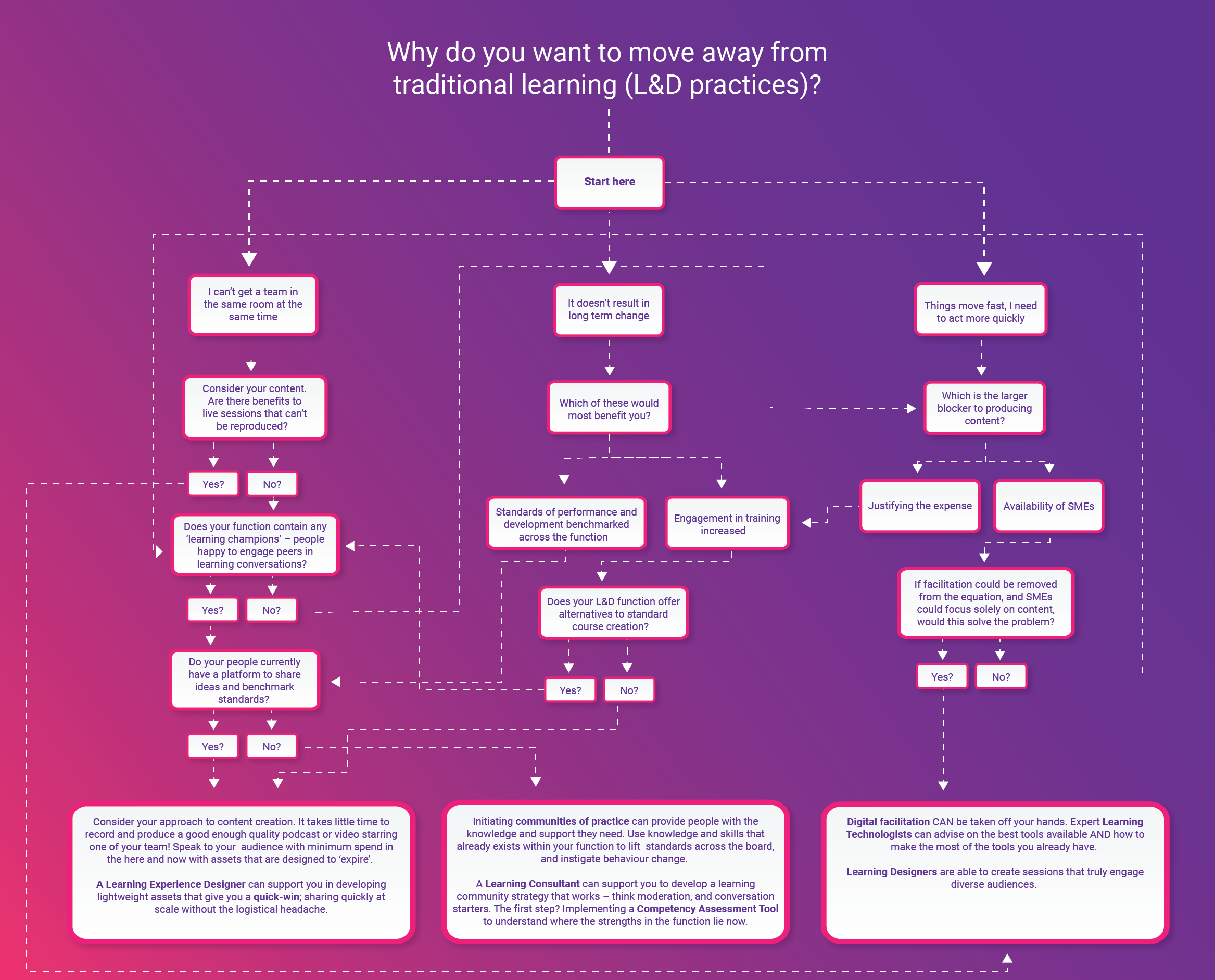Our Learning Experience Designers (aka the artists formerly known as ‘Instructional Designers’) have been instant messaging again. This time it’s Niamh and David talking about spaced repetition (aka spaced learning or spaced practice) – which is the simple microlearning principle that people learn better if they receive small chunks of learning over a longer period of time.
What is spaced repetition (aka spaced learning or spaced practice)?

Spaced learning is an absolute gift to our designers who love outer space imagery, but what else do you think it has to recommend it?
11:28
Well, unlike many ‘shiny and new’ things that appear on elearning hot-topics lists, the idea of spaced repetition is at least grounded in learning science.
Also, it is very much not a new concept.
11:30
How do you mean?

Wikipedia tells me that Hermann Ebbinghaus plotted the Forgetting Curve in 1885.
11:36
Ah, yes, slipped my mind. Clearly I need an app to keep reminding me of the fact.
11:37
Anyway we’ve known for a long time that ‘one and done’ learning doesn’t lead to long-term retention of information. Learning needs to be kept active, if you’re going to have successful retrieval of what you’ve learned. And spaced repetition and retrieval practice is a great way of keeping your learning active – like with flash cards.
11:38
What have they got to do with spaced repetition?
11:38
They’re actually a tried and tested way of using spaced practice as a learning technique. They come from the Leitner system, devised by the Austrian science writer Sebastian Leitner, in the 1970s. You show content to the learner at intervals, and increase the gap between the intervals over time. This means that the learner has to focus on only the most difficult-to-remember material. It’s a really efficient way of learning; it also means that you reinforce information in your long-term memory just before you forget it.
11:39
I'm interested in this focus on remembering and recalling information, though. This is an age of forgetting, since we can access information so easily. Why are we now elevating this principle above all others?
11:40
Until now and the advent of AI algorithms, the mechanisms haven't been there to automate spaced repetition.
11:41
But how much of what we need to learn at work has to be stored in long-term memory?
11:42
The age of having to remember everything related to your job is gone. The critical thing, I think, is to decipher what information needs to be retained long term and what information we just need to reference. Do people need to do something/act differently after this training (in which case, spaced rep is probably appropriate and necessary)? Or is this just something they need to refer to as and when they need it (in which case, don’t make them have to read irrelevant information; let them access what they need when they need it, like they do in real life)?
11:44
I do think there's loads of potential in it, but I'm also wary of the mechanicalness of it all. Have you tried any spaced repetition apps? I'm a recent convert to Duolingo.
11:47
I've dabbled in them, yes. I approve of the principle though have to admit to being a little uncomfortable with the idea of an algorithm determining what and when I should learn.
11:49
I missed my rendezvous with Duolingo the other night, and then I missed another night, and the guilt is building. Now I'm into the territory of aversion.
11:51
That's interesting. I hadn't really considered the fear factor.
That will be the next thing they need an algorithm for; determining how many missed sessions will put people off entirely.

By the way, it's Spanish I'm learning, and I only used 'rendezvous' there because I don't know the Spanish word for it. Yet.
11:59
The idea of microlearning is that it can be squeezed into any snippets of time you’ve got available and that’s great. Time and attention need to be given to workplace transfer too, though. Some topics need that sort of discussion between colleagues... like this sort of thing. Social learning.
12:10
Whatever makes it feel less mechanical. I think we can assume that the algorithms will grow in sophistication and complexity, just as Google’s has done. We’ve both been looking at microlearning tools that use spaced repetition. Potentially hugely exciting. But yes, you’d want to link it to other sorts of learning experiences or to real-life practice. It’s fine to have two minutes of Duolingo a day, but not instead of going to France or Spain.
12:17We can get you up and running with our new spaced repetition solution – Verify. It’s our super easy to use, agile microlearning platform that utilises those spaced repetition software algorithms that our LXDs were talking about. It will transform how your students learn in the workplace.
No more one-off forgettable courses with short term gains, where employees have to find ‘study time’ in their busy work schedules. Say hello to a learning culture where employees spend a couple of precious minutes engaged in the act of demonstrating competency and knowledge.
Our LXDs will quickly create for you a bank of smart, bite sized microcontent that your learners will want to engage with, because it’s relevant to them and their jobs. You can use these pieces of content to populate a spaced repetition system that automatically pulls learners towards the pieces of knowledge that they need.
The great thing is, you won’t have to take our word for it that your distributed practice strategy is working. Along with a modern, mobile interface – desktop or app – Verify has an advanced analytics dashboard that displays learning data that can truly drive continuous improvement and learning strategies. Use these analytics to see how spaced retrieval can improve recall of vital learning among your workforce over a longer period of time. Watch how the spacing effect impacts performance and decreases knowledge gaps in your organisation.
Speak to us today if you would like to discuss how our learning experience designers can help you practically apply microlearning in the workplace – and wherever else employees want to learn.
Links in this blog:
Verify by Logicearth
https://logicearth.com/verify/
What is Microlearning
https://logicearth.com/microlearning/
Guide to data-driven learning
https://blog.logicearth.com/guide-to-data-driven-learning









Was this article helpful?